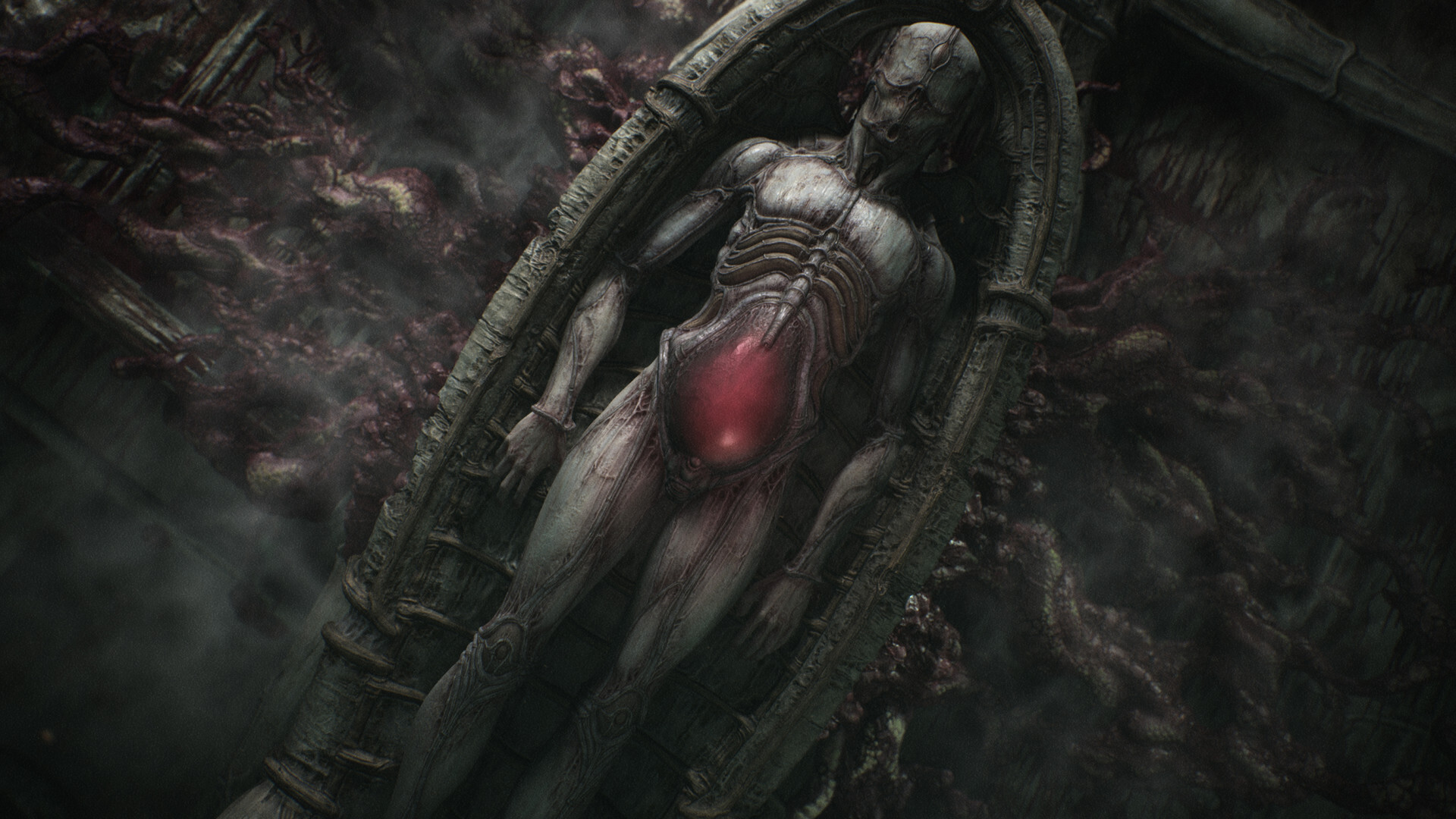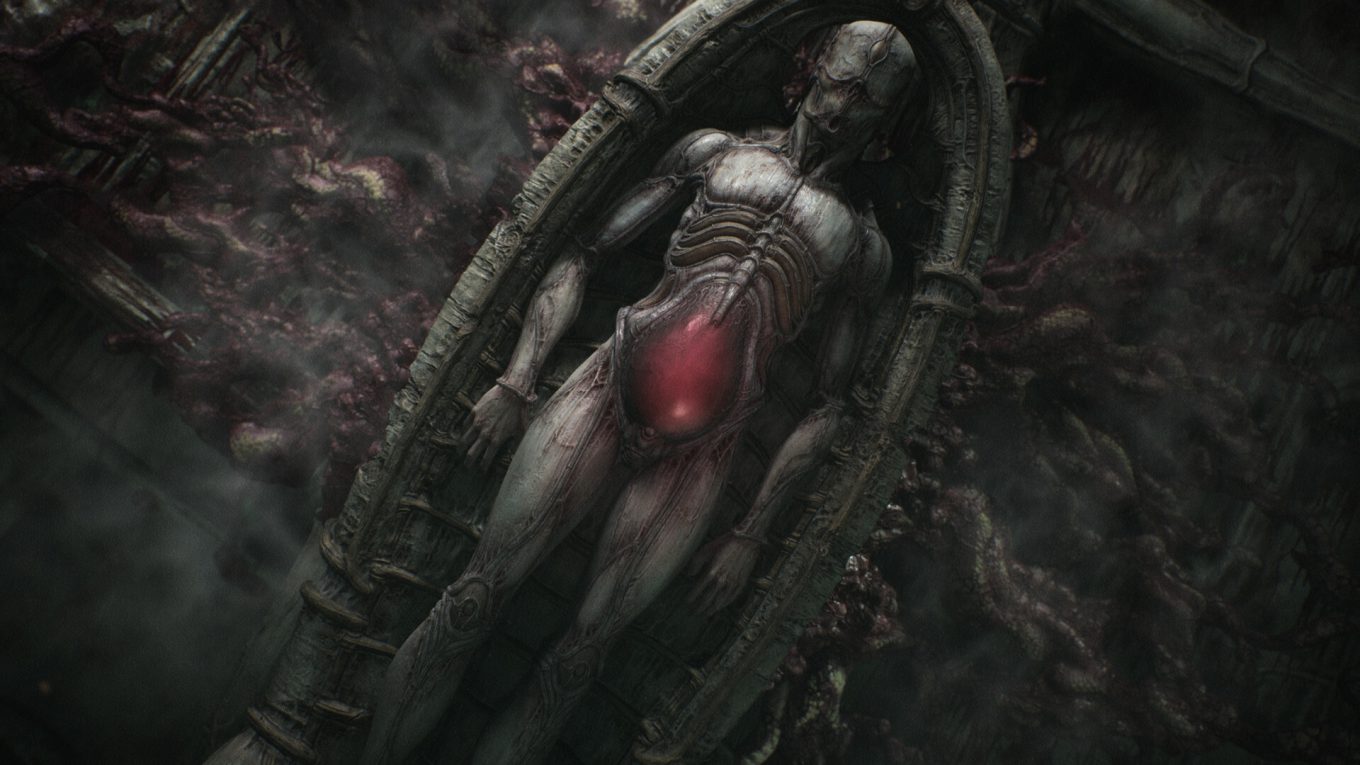Horror Adventure Game Scorn Review: The Darkest And Most Spooky Dream
You wake up from a dark wasteland with an ominous fog in the air. Get up and look away, in the distance there are tall buildings whose structure and texture are difficult to recognize only from the appearance, several lines cracked on the ground made of hard soil, dripping sarcomas and neurological human tissues surround your way, and there are a large number of inhuman-shaped wreckage scattered on the side of the road, they are not terrifying death, but they all pose strangely, like a specimen that has just been salvaged from soaking liquid.

A thought cries out repeatedly in your blank mind, this is not the world you know, but it doesn't look like a fantasy alien planet. – This is on the verge of human cognition, a space constructed by panic and uneasiness from the deepest depths of consciousness.
Thrown into the world, Scorn is a very different style of first-person horror puzzle game with some survival shooter elements. The structure of the game tends to be linear, with a variety of scattered mechanics driving the process, some scenes also have a network of exploration branches, and more than half of the battles can be avoided. However, the gameplay part still looks decent to be honest, but its expressiveness in atmosphere building is definitely stronger than most horror games you've played. Since the game's public promotional screening, people's attention to "Scorn" has come from its strange art style that combines the two painters, "Dzisław Beksinski" and "Hans Rudolf Giger". This distorted depiction of human limbs and death fits perfectly with the heart-rooting but unrecognizable source of fear in "Scorn".
But in addition to the visual thrill of flesh and blood, "Scorn" also contains an obscure "philosophical" background. On the crowdfunding page of Scorn, it reads: The game is designed around the idea of "being thrown into this world." What I understand to be thrown into this world may be like an undead awakened from the prison of the Northern Undead, an anonymous person revived in the morgue of the city of France and India. They don't know where they came from, and there is a huge world waiting to be explored in front of them—just as confused as when we were born as humans faced with the entire unknown world.
The concept of "being thrown into the world" and the subtitle "Dasein" (here) at the beginning of the game belong to Heidegger's philosophy. So even though "Scorn" has gone through such a long development process and the content of the game has been reconstructed several times, the philosophical concepts that have been deeply embedded in these self-supporting projects are like steel seals that have penetrated the spirit and flesh of the work.
Of course, don't worry about how difficult and obscure philosophy the game really needs to be, because there is no form of text or dialogue in the flow of Scorn, everything is presented in a visual, auditory and conceptual way. Rather than telling a story, it is more appropriate to say that "Scorn" is depicting a state of mind and inner feelings.
A cage of meat
You walk through a dark corridor made of skeletons, carefully stepping through the scattered pieces of flesh and blood on the ground, trying not to slip on the pus flowing from it. Carrying a gun made of unknown biomass, you load the magazine formed by the meat trough with bone bullets, beware of hostile creatures in this labyrinth of flesh and blood. The things moving here are not so much living things, but rather moving pieces of flesh wrapped in broken leather. All the walls and passages are like living things or things that have been living things, and all organs are like simulating the operation of nerves and blood vessels, like a huge biological factory. And you are just a living part deeply immersed in it.
Separated from words and language, the core experience of "Scorn" comes from sensory stimulation, and this nightmarish labyrinth challenges the player's physiological endurance at all times. To be honest, when I encountered some scenes in the early part of the game, the discomfort made me feel the urge to quit a few times, but after a period of hearing and seeing, I gradually got used to these settings, and I could treat all kinds of meat balls as nothing. It is also commendable for the game's realism in detail, its environmental narrative methods can be called excellent, all scene interactions, plot events have a complete and detailed animation performance, including the process of switching guns and changing bullets, starting mechanisms and consoles, etc., there will be no "air-to-space" phenomenon. At the same time, the minimalist UI ensures maximum immersion, leading the player forward only through weak guidance in the environment.
The underlying worldview setting of "Scorn" is indeed rich and delicate, and the system mechanisms such as "living guns" and parasitic hands are also refreshing. Unfortunately, in addition to the visual impact, the game does not bring players a higher level of experience in terms of gameplay.
Gorgeous skin with paralyzed bones
It's not that the gameplay of "Scorn" is bad, the combat experience is still quite tense. Ammo in the game is extremely limited, and although the types of enemies are small, there are more of them than expected. During the process of clearing the level, some of the ammo and health bars are always not full. Every time I encounter an enemy, I will try to get out of the battle as soon as possible, and in addition to visual stimulation, monsters do give enough pressure to survive.
The problem is that the gameplay is too monotonous. All the puzzles and battles are all in order, and there is no gameplay design beyond the basics. In such a world organized by flesh and blood, there are still pipes that need to be closed to enter the "fan", door locks that can be opened by constantly improving the "key authority", and the "Huarong Dao" mini-game full of violation – is their existence serving the worldview, or is it a compromise for the so-called gameplay?
The paradox of Scorn is that the visual representation of the game is so unique, but the gameplay structure is too mediocre. Cuphead also has smooth animation art, but what keeps players hooked is the hardcore and fun boss battle design. But if you replace the flesh-and-bone scenes and enemies of "Scorn" with the common sci-fi iron-sheet metal, then it is almost completely lost, and it is difficult to find its attraction.
There's no denying that the core gameplay experience of Scorn comes from visual presentation, and it's a bit too much to compare it. But gameplay and art should complement each other, I don't know if it is dragged back by mediocre gameplay, or supported too high by powerful art – this outer skin is too high than its original quality, and its weak skeleton is difficult to support all its core experience, which eventually leads to a serious gap between appearance and interior.
The art of impoliteness
Based on the Q&A interviewed by the production team, it can be assumed that they would be happy to classify the game as "art". I don't deny the artistry of Scorn, or that art isn't always polite or pleasant, but it's not now exhibited in a glass case in the Louvre, but as a game mounted on players' hard drives. Then some problems in its gameplay are difficult to prevaricate with "style" or "sense of substitution". There is no form of text or dialogue in "Scorn", and the whole process adopts the method of environmental narrative for weak guidance, but its guidance is obviously not well designed enough. Players may get lost in the setting or fail to understand the meaning of the puzzle because they lack a key link. There won't be a map telling the player which way to explore, and no hints telling you what to do now. In short, if there is no radio wave against the author, it is very possible to get stuck.
Another bad part of the experience is the game's auto-save mechanism. The game is saved instantly like the "Souls series", and will record the state of the game at the moment the player exits, but if you encounter a bug or fall into a stuck state due to an operation error, you are likely to fall into a dead file – after all, in most scenes, you can't kill yourself.
And each saved checkpoint of the game is the starting position of the chapter. In other words, if you have to read the file due to the block, it is very likely that you will return to the progress that lasted about 1 hour. Scorn is a good viewing experience, but it clearly doesn't take care of the gameplay part.
Epilogue
Admittedly, the gameplay experience of Scorn is a powerful one, and it can feast the eyes of players who seek adventure and excitement; Let fans who like "HR Giger" masters, or Cthulhu lovers from where, exhale; It can also make ordinary players feel fear that they have never had before, and a visual feast that is not so comfortable. In any case, it will become an iconic work with a high cost and a long production cycle, presenting an extremely niche aesthetic.
But walking in such a labyrinth of flesh and blood, only visual surprise is not enough, its gameplay seems too weak. Maybe one day, I'll remember seeing an art exhibition by a well-known artist, but I probably won't keep it in my mind. Because what can really penetrate the heart is not what gorgeous skin, but tough bones.
